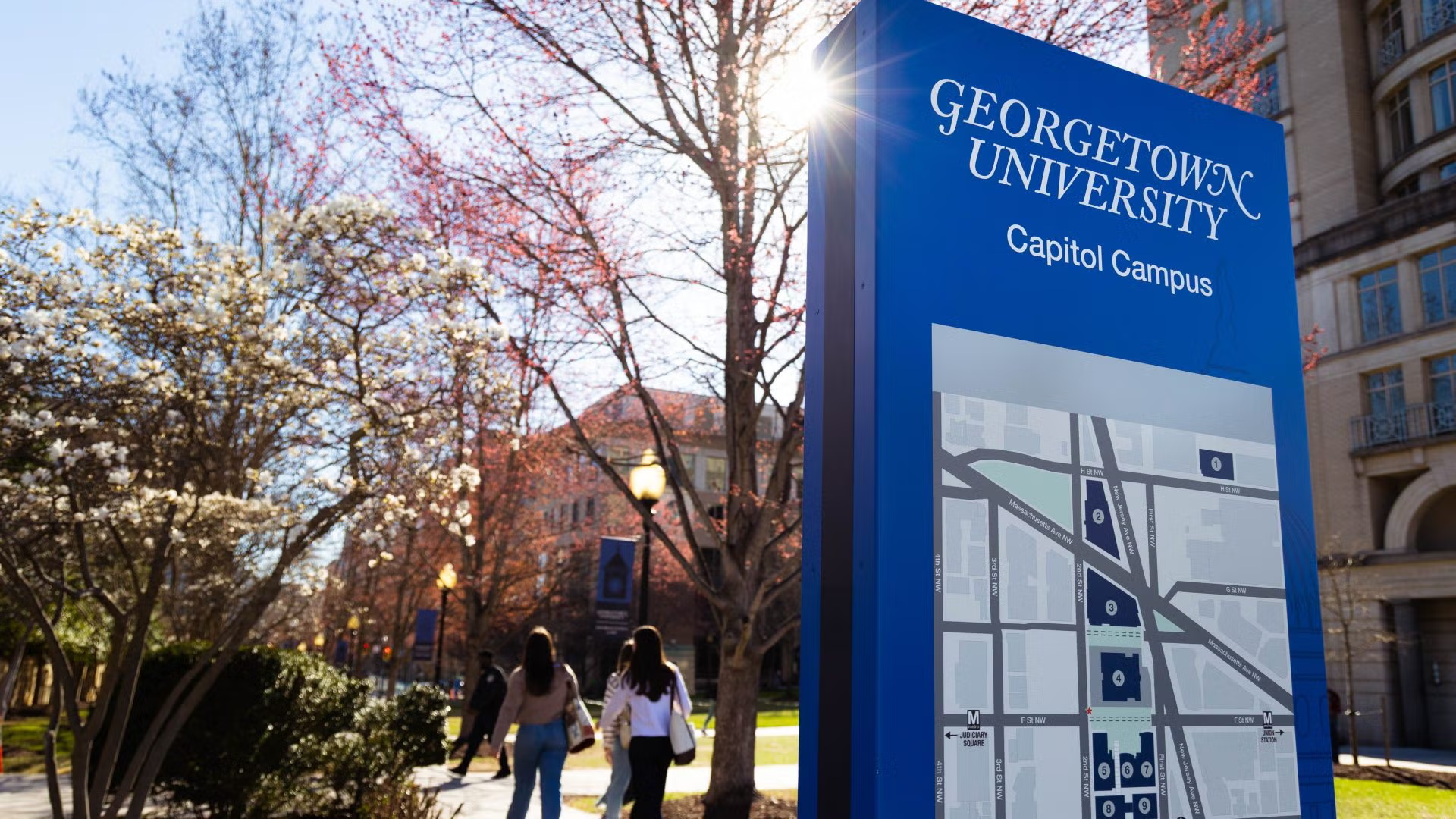Several academic programs relocated to Georgetown University’s Capitol Campus for the Fall 2025 semester as the university expands its downtown presence.
The Capitol Campus’ recently opened building at 111 Massachusetts Ave. now hosts multiple McDonough School of Business (MSB) graduate programs, and a School of Health (SOH) graduate program will join in Fall 2026. They join a variety of programs moving to the facility from other Capitol Campus buildings, including the Capitol Applied Learning Labs (CALL), where students live downtown for a semester while taking classes and completing an internship.

Matthew Cypher — director of the MSB’s Steers Center for Global Real Estate, which teaches a curriculum in real estate and moved to the Capitol Campus — said he is excited about his program relocating closer to relevant networks and job opportunities.
“The proximity to the people and organizations that are leading the real assets industry is much better,” Cypher wrote to The Hoya. “We’re hopeful to capitalize on this proximity for the benefit of our students and alumni.”
In addition to the global real assets program, students pursuing master’s degrees in management and environment and sustainability management now study primarily on the 111 Massachusetts Ave.’s facility’s seventh floor.
Cypher said the building’s modern features and location will benefit students.
“The physical structure is very well done, views are great, common areas are cool in terms of unique nooks for doing work,” Cypher said. “The human activity both in the building and surrounding is very good as well.”
The School of Health previously planned to relocate its global health and global infectious disease programs to 111 Massachusetts Ave. alongside the MSB programs, but will instead remain on the Hilltop until next fall.
John Quattrochi, a professor in the department of global health, said he looks forward to the move to downtown Washington, D.C., next fall because it will provide closer access to powerful institutions such as the U.S. Congress and the World Bank.
“We’re excited to be in a state-of-the-art facility that is near some of the most important organizations in global health, like the Pan-American Health Organization, the World Bank and the U.S. Congress,” Quattrochi wrote to The Hoya.
Riley Green (GRD ’26), who is pursuing a master’s in global health, said she thinks moving downtown will help advance her career.
“The Capitol Campus, thanks to its central location in downtown D.C., could offer more opportunities to interact with local businesses to help students form connections to advance their careers,” Green wrote to The Hoya.
Green said working alongside other graduate programs will foster collaboration.
“Since the campus will be hosting classes from different areas of study, it could create an environment for greater interdisciplinary interaction,” Green said.
Hang Nguyen (GRD ’29), a doctoral candidate in the global infectious disease program, said the move downtown is an important next step for the university’s graduate programs.
“As students, we are proud of our school with this innovation,” Nguyen wrote to The Hoya.
Alongside the changes to graduate programs, undergraduates enrolled in the CALL are now based out of 111 Massachusetts Ave. instead of the nearby 500 First St.
Abigail Lewis, director of the CALL, said the new building is an enjoyable space to work and study.
“I love the space, I love the light, I love having so many of my colleagues around now — it’s really awesome,” Lewis told The Hoya.
The School of Continuing Studies, which provides academic opportunities for various types of students, and the Earth Commons, a program based in environmental studies, also moved to the new building. They both were previously housed in other buildings within the Capitol Campus.
Lewis said the new building brings together programs previously scattered across Capitol Campus facilities and new academic offerings, contributing to a more connected atmosphere.
“We started in the original SCS building — it was our first year — and then we moved to another building,” Lewis said. “And then this past spring, we were temporarily relocated to the McCourt Building. And now we’re in our forever home.”